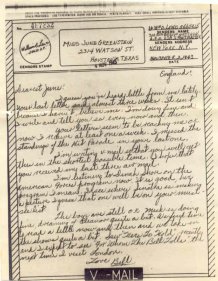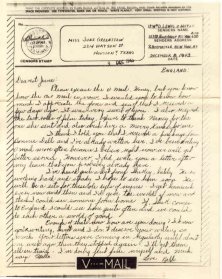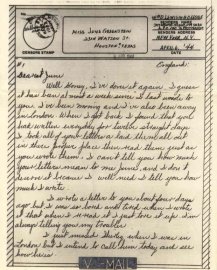





To see larger images of the thumbnails below, click on the dates. See more information below about what V-mail was.
 |
 |
 |
 |
 |
 |
According to the National Postal Museum:
"As important as regular mail was to the morale of American troops, military supply ships were often swamped with bags and bags of letters needing to be delivered. Cargo space taken up by the mail was desperately needed for war materials. To combat this difficulty, the American military post popularized an imaging technique that originated in England. Called "V-mail" by the Americans, the process consisted of microfilming letters sent to and from military personnel, transporting them by ship in microfilm form, and blowing them up again at specified locations before delivering them to their addressees.
|
Sending the letters as thumb-sized images on microfilm allowed the military to conserve precious space in their cargo ships while still arranging for the delivery of morale-boosting letters. Though specially designed sheets of writing paper were needed to send V-mail, soldiers in all branches of the armed forces were provided with these sheets free of charge. It was also free for soldiers to send V-mail, though Americans at home had to pay to use the service."
|
Here is a contemporary newsreel at the National Archives. At about 4:45, you can see V-mail being filmed, mailed and read by soldiers.